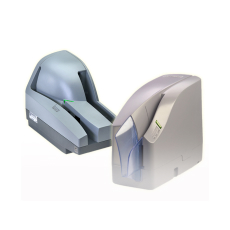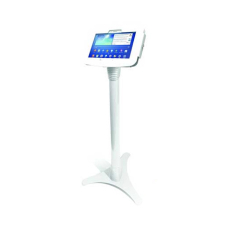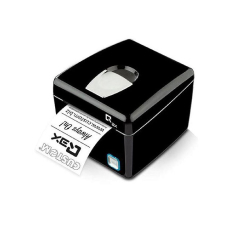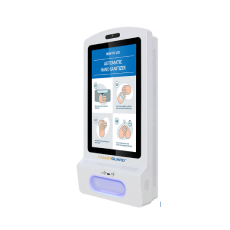Cheque Fraud Solution
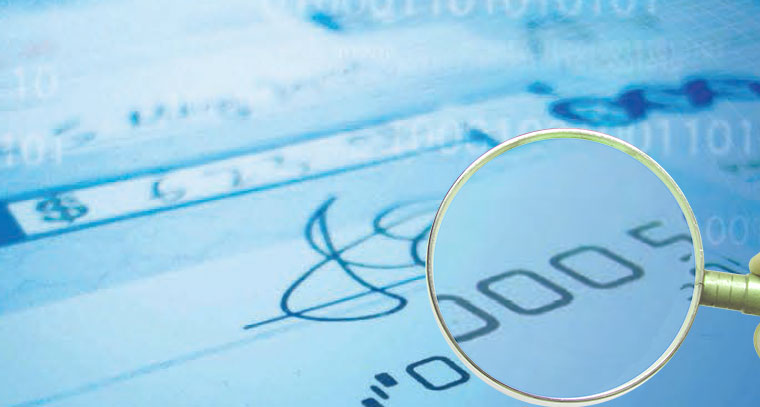
Most cheque fraud is detected and reported by the drawee financial institution (on-us). Less often, fraud is detected and reported by the collecting financial institution – where the cheque is deposited.
Types of Cheque Fraud
More and more criminals defraud their victims, including the banks, financial institutions or businesses that issue and accept cheque, and the customer, either the account holder or the recipient.
In most cases, cheque fraud begins with the criminals stealing an original blank cheque that is written or marked in order to be passed off as if by the legitimate signatory. However, with the rapid advancement in technology, fraudsters now have more ways to commit crimes using various types of cheque fraud including:
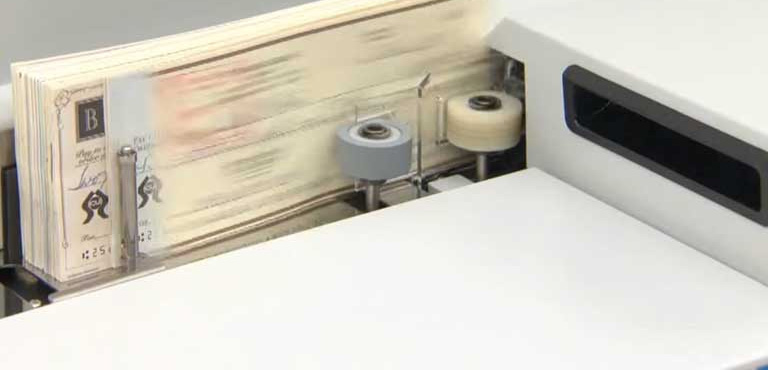
Cheque Kiting
Cheque kiters take advantage of new regulations requiring banks to make funds available sooner. With the increasingly competitive bank practices, it becomes easier for kiters to make use of non-existent fund in a bank account by simply writing a cheque for a value greater than the account balance from an account in one bank.
To cover the non-existent funds from the account, they may write another cheque from another account of the same person in another bank, which is also with non-sufficient funds. That is, this fraud is also called round robin transactions.
Forgery
Forgers take advantage of the opportunity when an employee issues a cheque without proper authorisation. Alternatively, they often steal a legitimate cheque, forge the signature and endorsement, and present it for payment at a retail location or for cash/deposit at the bank teller window.
Counterfeiting & Alteration
Counterfeiting
Counterfeiters take advantage of the advancement in laser printing that can be afforded at a relatively inexpensive cost to create a new, unauthorised cheque. When it uses paper of the original cheque, it is called originated counterfeit cheque. On the contrary, when it uses new paper, it is called non-originated counterfeit cheque.
As counterfeiters may commit fraud by simply duplicating a cheque with advanced colour photocopiers or fabricating a cheque with desktop publishing equipment, such as computer, scanner, sophisticated software and high-grade laser printer to alter the MICR line, counterfeiting becomes the fastest-growing source of fraudulent cheques.
Alteration
Cheque fraudsters take advantage of the theft of a legitimate cheque in transit between the writer and recipient. They commit fraud by changing some or all information on the cheque.
Spot Alteration
Spot alteration is a process of changing some information on specific locations, such as the payee or amount details to the benefits of the fraudsters.
Payee Only – cheques have been altered to show payee details other than those originally authorized by the drawer
Amount Only – cheques have been altered to show amount details other than those originally authorized by the drawer.
Both Payee and Amount – Cheques have been altered to show payee details and amount details other than those originally authorized by the drawer.
Cheque Washing
Cheque washing is a process of erasing all the information on a cheque, either printed or written, with chemicals, such as:
- Acetone
- Benzene
- Bleach
- Carbon tertrachloride
- Chloromice
- Clear correction fluids
- A high performance eraser
- Cheque washers subsequently will write the cheque to themselves, and increase the amount payable significantly.
Breach of Mandate
This involves payment of cheques which do not follow the original instructions or arrangements set up. That is, the cheque may require two signatories but the financial institution, through error, allows only one signatory.
Reduce Cheque Fraud
Preventative Action
Implementing Security Features
One of so many ways to minimise exposure to cheque fraud is by implementing paper-based security measures, including the security features.
Watermarks
Watermarks are made by applying different degrees of pressure during the process of paper manufacturing. Most watermarks make subtle designs on the front and back of the cheques. This feature can only be seen when they are held up to light at a 45-degree angle.
Not easily visible and cannot be copied accurately, watermarks offers higher security level that help banks minimise cheque fraud.
Copy Void Pantograph
Pantographs are patented designs in the background pattern of cheques. This feature makes photocopied cheque nonnegotiable by automatically changing the pattern and making the word “VOID” appear.
Chemical Voids
Chemical voids treats cheque paper in a manner that is not detectable until eradicator chemical contact the paper. When chemicals are applied, the chemical voids causes the word “VOID” to appear, making the item nonnegotiable.
High-Resolution Micro Printing
High-Resolution Micro Printing is very small printing, typically used for the signature line of a cheque or around the border in what appears to be a line or pattern to the naked eye. When magnified, the line or pattern contains a series of words that run together. However, if the cheque has been photocopied or scanned with a desktop scanner, the pattern will be totally illegible.
Three-Dimensional Reflective Holostripe
A holostripe is a metallic stripe that contains one or more holograms, similar to those on credit cards. These items are difficult to forge, scan, or reproduce because they are produced with a sophisticated, laser-based etching process.
Security Inks
Security inks react with common eradication chemicals. These inks reduce a forger’s ability to modify the printed amount or alter the designated payee because when solvent are applied, a chemical reaction with the security ink distorts the appearance of the cheque. The chemical reactants produce permanent stains when bleach or solvents are used to alter the cheque document.
Visible Fibres (Overt)
Fibres are visible in ordinary light and arranged on both sides of the cheque. These fibers will extend from a torn edge to verify its authenticity.
Invisible Fibres (Covert)
Embedded in the sheet, fibres are visible only under ultraviolet light, and are extremely difficult to duplicate.
Applying MICR Code
MICR, which stands for Magnetic Ink Character Recognition, is a set of numbers printed along the bottom of a cheque. It contains information on cheque’s serial number, bank and branch code, account number, transaction code, and cheque amount.
Generally, information on the clear band of a legitimate cheque is encoded with MICR encoder, either impact or laser printer. However, banks are most recommended applying the impact technology for MICR encoding to minimise exposure to cheque fraud.
All information encoded on the MICR line is printed using either the E-13B or CMC-7 font of which characters have waveform that is different one from the others.
Manual Detection
Manual detection requires staff’s capability to identify fraudulent cheque based on the security features and other visual characteristics, such as colours. In addition, staff’s vigilance in learning every single information printed or written on the cheque is also vital.
Investigating Physical Conditions
By fanning through a group of returned cheques, a staff may suspect the cheque having a slightly different colour than the rest of the cheque in the batch fraudulent. Even further, with a more thorough inspection, the staff can find out that fraudulent cheque may be slightly damaged due to the force used to erase and alter the information.
Colours
A counterfeit may stand out as having a slightly different colour than the rest of the cheque in the batch. Even when the cheque is taken out of the batch, stains or discolorations may appear on the cheque due to erasures of alterations.
Perforation
Most cheques are produced by a legitimate printer, perforated and have at least one rough edge. However, many companies are now using in-house laser printers with MICR capabilities to generate their own cheques from blank stock. These cheques may have a micro-perforated edge that is difficult to detect.
Investigating Cheque Details (Data Search)
Cheque Number
Fraudsters stealing a legitimate cheque of which serial number is neither missing nor change. However, an investigation shows that fraudster tends to use cheque with a low serial number that is written on account less than one year old.
Bank’s Address
The bank’s address is missing or changed.
Authorised Signature
A legitimate cheque is authorised with signatures. Fraudsters, however, tend to fake the signature.
Detecting Left Traces of Fraudulent Activity
Regardless the chemical material and sophisticated technique applied in cheque washing, it is still possible to identify fraudulent cheques from residues of original information, such as stain, that remains on the cheque leave.
Some Technologies in Cheque Fraud Detection
MICR Reader
Most, but not all forgers, lack the ability to encode with magnetic ink. They will often substitute the magnetic ink with regular toner or non-magnetic, which is dull and non-glossy/non-reflective in appearance. MICR Reader enables staff to identify and recognise cheques suspected to be fraudulent based on the information printed on the MICR line.
When a customer submitted a cheque of which information on the MICR line is printed or altered with non-magnetic ink, the MICR will be unreadable, thus suspected as fraudulent. In other cases, the MICR may be readable but do not match the cheque number and/or the bank district.
Image Scanner
Image scanner helps staff recognise and identify cheques suspected to be fraudulent based on the image of the cheque. When a cheque is scanned and the image is displayed on the staff’s monitor, it will be compared to the image of the original cheque displayed adjacent to the scanned cheque.
OCR (Optical Character Recognition)
Optical character recognition allows for the conversion of scanned images of into machine-encoded text, making this technology is specifically useful to identify the legitimacy of non-MICR encoded cheque.
ICR (Intelligent Character Recognition)
Intelligent character recognition is the advanced version of OCR that allows font and different style of handwriting. With improved accuracy and recognition level, ICR enables staff to recognise fraudulent cheques by simply comparing the information obtained from handwritten text to the standard information should have been available on a legitimate cheque.
Some Challenges
Insufficient Knowledge and Skill
Manual detection, indisputably, is the least effective action to combat against cheque fraud. Yes, banks have a number of staff to defend them from the front line of the combat. But, do these staff have sufficient knowledge of cheque fraud: the motives, the types, the spread, the security features, etc.?
Even if they do, another question must be carefully considered; do they have proper skill to detect physical conditions, cheque details, and left traces of fraudulent activity accurately?
A great number of statistics has shown that such manual handling is time-consuming and highly potential to significant issues, from exposure to human error to significant amount of loss.
Widespread Cheque Fraud
Realise or not, the rapid advancement made in technology, easy access to MICR encoding solutions in the market has been contributing to the extensive cheque fraud. Cheque fraud spreads widely, from rural to metropolitan area.
Consequently, banks can no longer stand still in particular area, for example in the head office, and let their branches and customers in other areas become victim of the widespread cheque fraud.
Urgently Required: Reliable Cheque Fraud Detection System
With the widespread use of cheque fraud and insufficient knowledge and skill of the staff in the front line, banks urgently require a real-time solution to be applied at the point of presentment at branch level. The solution must be fully-comprehensive, eliminating the need for expertise or lengthy training of the staff or teller.
The solution must be capable of scanning cheque images for simultaneous electronic processing. In addition, it must protect the data from the scanned image by disallowing the teller to override the data, avoiding potential collusion between tellers and criminals.
